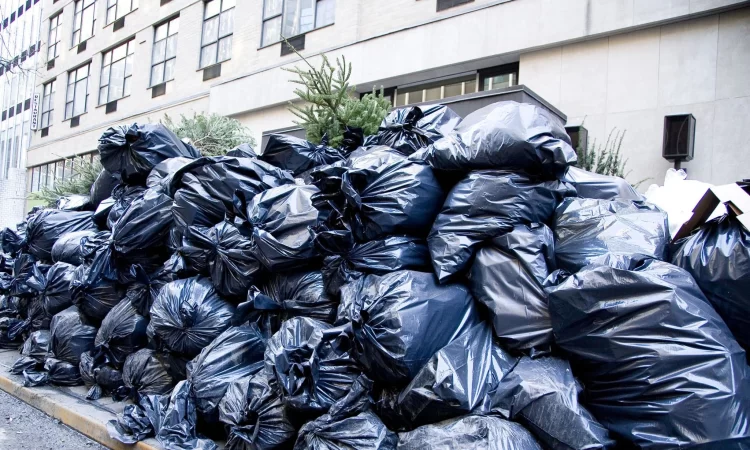
Attention all business owners and environmentally conscious individuals! Are you tired of dealing with overflowing trash bins, costly waste disposal fees, and negative environmental impacts? Look no further as we dive into the key components to create an effective commercial waste management plan. Let’s tackle this issue head-on and discover how to reduce our carbon footprint while saving money.
What Are the Key Components of an Effective Commercial Waste Management Plan?
As a business owner, you are responsible for the waste your company produces. Therefore, a commercial waste management plan is key to reducing the amount of waste your company produces and disposing of it properly.
There are four key components to an effective commercial waste management plan:
- Waste Reduction
- Recycling and Reuse
- Proper Disposal
- Employee Education and Training
Waste reduction should be the first goal of any commercial waste management plan. There are many ways to reduce waste, including reusing materials, repairing instead of replacing items, and recycling. In addition, reducing the amount of waste your company produces will save money and resources.
Recycling and reuse are the next key components of an effective commercial waste management plan. Many products can be recycled or reused instead of being sent to landfills. Recycling reduces pollution and conserves resources, while reuse extends the life of products and reduces waste.
Proper disposal is the third key component of an effective commercial waste management plan. Hazardous wastes must be disposed of properly to protect human health and the environment. Improper disposal of hazardous wastes can contaminate soil and water, causing serious environmental problems.
Employee education and training are the fourth key component of an effective commercial waste management plan. Employees should be taught about proper methods for reducing, recycling, and disposing of waste produced by your company.
Types of Waste Discussed
Several types of waste should be considered when developing a commercial waste management plan. These include:
Food waste: This is a common type of waste generated by businesses, especially restaurants and cafes. Food waste can be difficult to manage and dispose of properly, so it’s important to have a plan in place to deal with it.
Paper and cardboard: Many businesses generate large amounts of paper and cardboard waste. This can be recycled, but it’s important to have a system in place to ensure that it doesn’t end up in the general rubbish bin.
Glass: Glass is another common type of commercial waste. It can be recycled, but care must be taken to ensure that it doesn’t end up in the general rubbish bin.
Plastic: Plastic is another common type of commercial waste. It can be recycled, but care must be taken to ensure that it doesn’t end up in the general rubbish bin.
Implementing an Effective Waste Management Plan
When it comes to commercial waste management, there is no one-size-fits-all solution. The key components of an effective commercial waste management plan will vary depending on your business’s specific needs and resources. However, all businesses should follow some general best practices when implementing a waste management plan.
One of the most important components of an effective waste management plan is setting clear goals and objectives. What do you hope to achieve with your waste management plan? Do you want to reduce the amount of waste your business produces? Increase recycling rates? Improve employee engagement in sustainability initiatives. Once your objectives are clear, you can start creating a plan of action to reach them.
Another key component of an effective waste management plan is conducting a thorough waste audit. This will help you identify where your business generates the most waste and what types are generated. This information allows you to develop targeted strategies to reduce or eliminate wasteful practices.
Be sure to involve all employees in your waste management plan. Educate employees on the importance of reducing waste and encourage them to participate in sustainable practices like recycling and composting. By involving employees in your efforts, you can significantly reduce the amount of waste your business produces.
Establishing Goals and Objectives for Your Plan
The first step in creating an effective commercial waste management plan is establishing clear goals and objectives. What does your business hope to achieve by implementing a waste management plan? Some common goals include reducing the amount of waste produced, increasing recycling rates, and minimising the environmental impact of waste disposal.
Once you have established your goals, you must create specific objectives to help you achieve them. These objectives should be measurable, achievable, and realistic. For example, if your goal is to reduce the amount of waste your business produces, a possible objective could be to reduce waste by 10% within six months.
Creating clear goals and objectives for your commercial waste management plan will help ensure its effectiveness and success.
Conclusion
Commercial waste management is essential for businesses to remain compliant, eco-friendly, and cost-effective. By following the key components of an effective commercial waste management plan, such as setting goals and objectives, designing a system of collection and disposal routes, monitoring progress, optimising resources efficiently, and developing policies and procedures to ensure compliance with regulations and safety protocols – businesses can create a sustainable resource cycle that not only benefits their bottom line but also reduces environmental pollution. Furthermore, by educating employees on proper waste segregation methods, they can be further empowered to create a cleaner future for us all.
